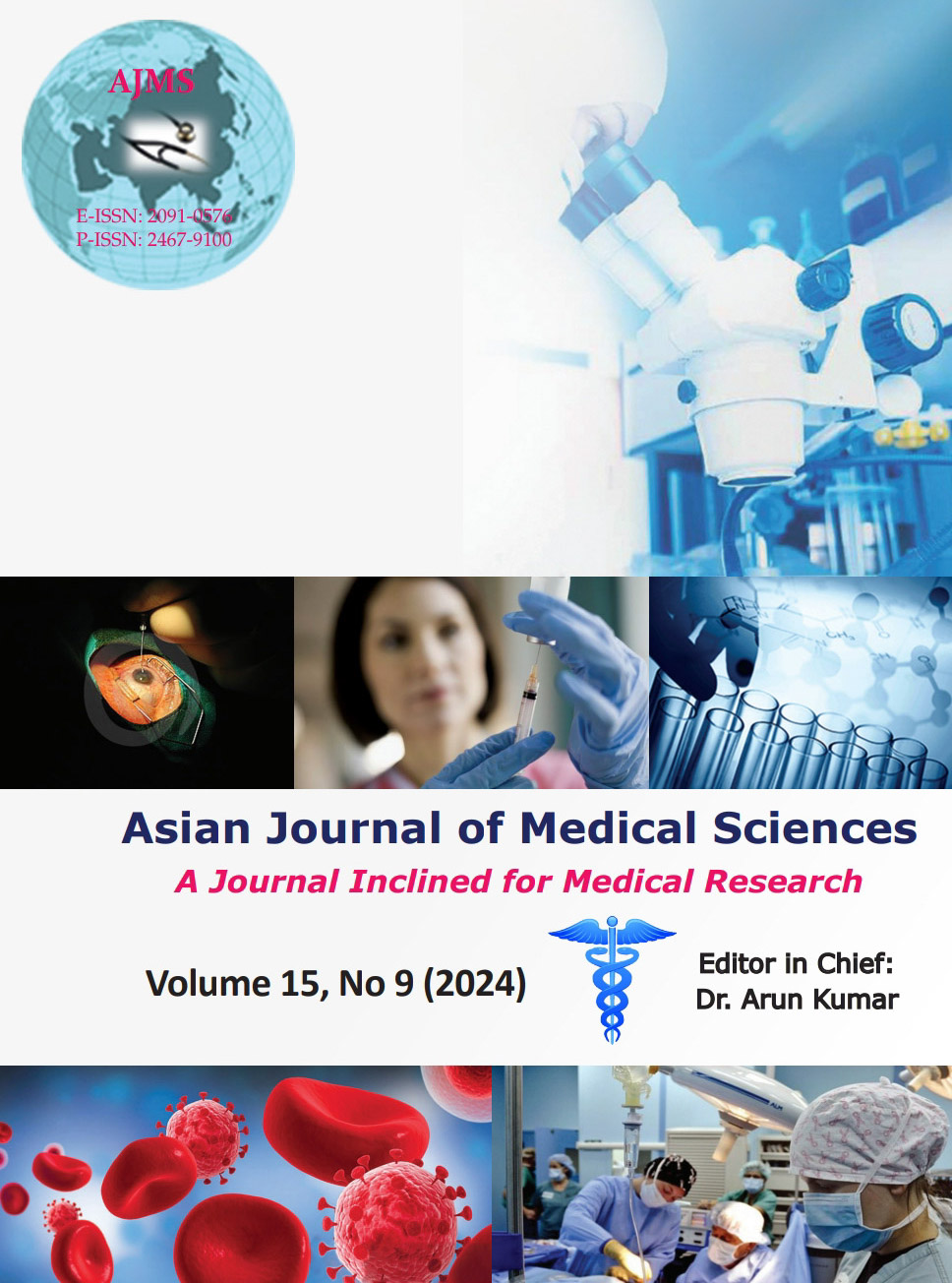A histomorphological and immunohistochemical analysis of invasive lobular carcinoma of breast: A case series
Keywords:
Invasive lobular carcinoma; Pleomorphic lobular carcinoma; Hormone receptor; Human epidermal growth factor receptor 2/neuAbstract
Invasive lobular carcinoma (ILC) is the second most common special subtype of invasive breast carcinoma comprising 5–15%. ILC defines as invasive carcinoma comprising non-cohesive single-file linear pattern in fibrous stroma. The aim of the study was to evaluate the histomorphological features and immunohistochemical analysis of ILC. A total of 19 cases were encountered from March 2020 to February 2024 out of 129 breast cancers. The sociodemographic profiles and clinicopathological parameters of the patients were studied with special emphasis on their morphology and hormone receptor status. The mean age of patients is 42.8 years. Out of 19 cases, 84.2% showed feature of classic type, 5.2% of tubule-lobular, and 10.5% of pleomorphic lobular carcinoma. The majority of cases (63.2%) showed histologic Grade 2, and 10.5% showed Grade 3. On immunohistochemistry examination, 79% were estrogen receptor (ER) and progesterone receptor (PR) positive with 10.5% of cases was human epidermal growth factor receptor 2/neu (HER2/neu) positive. Our study showed higher cases of classic type ILC, mostly of histologic Grade 2; higher ER-PR receptor positivity and HER2/neu negativity.
Downloads
Downloads
Published
How to Cite
Issue
Section
License
Copyright (c) 2024 Asian Journal of Medical Sciences

This work is licensed under a Creative Commons Attribution-NonCommercial 4.0 International License.
Authors who publish with this journal agree to the following terms:
- The journal holds copyright and publishes the work under a Creative Commons CC-BY-NC license that permits use, distribution and reprduction in any medium, provided the original work is properly cited and is not used for commercial purposes. The journal should be recognised as the original publisher of this work.
- Authors are able to enter into separate, additional contractual arrangements for the non-exclusive distribution of the journal's published version of the work (e.g., post it to an institutional repository or publish it in a book), with an acknowledgement of its initial publication in this journal.
- Authors are permitted and encouraged to post their work online (e.g., in institutional repositories or on their website) prior to and during the submission process, as it can lead to productive exchanges, as well as earlier and greater citation of published work (See The Effect of Open Access).




